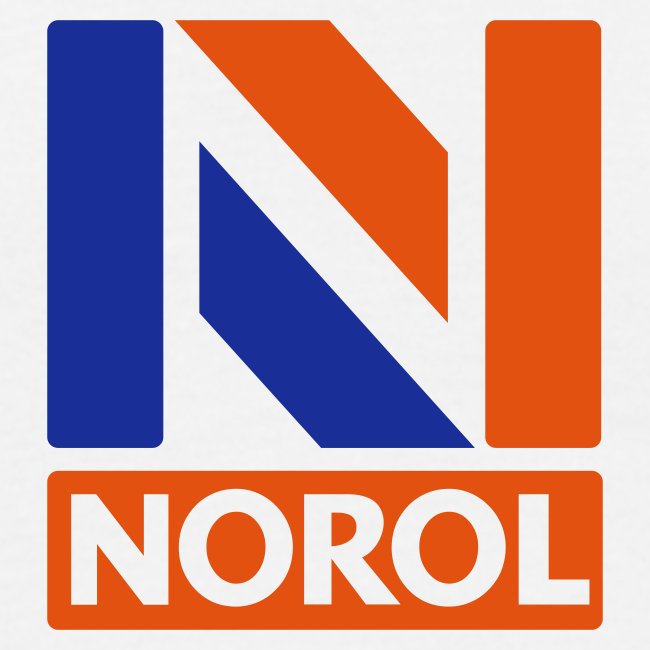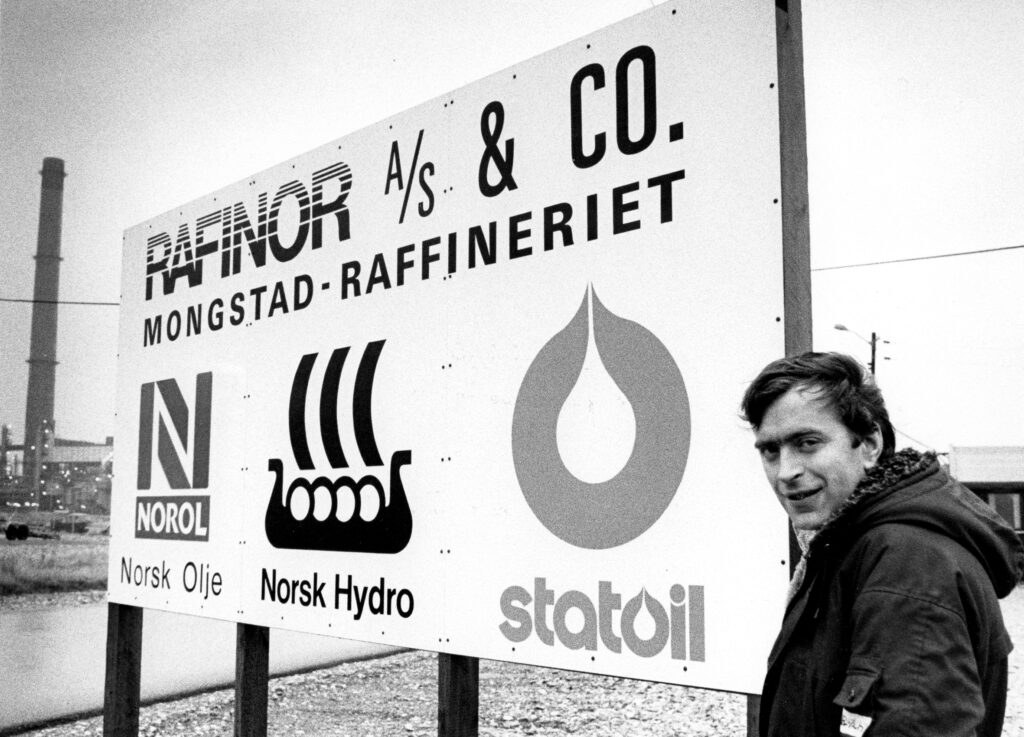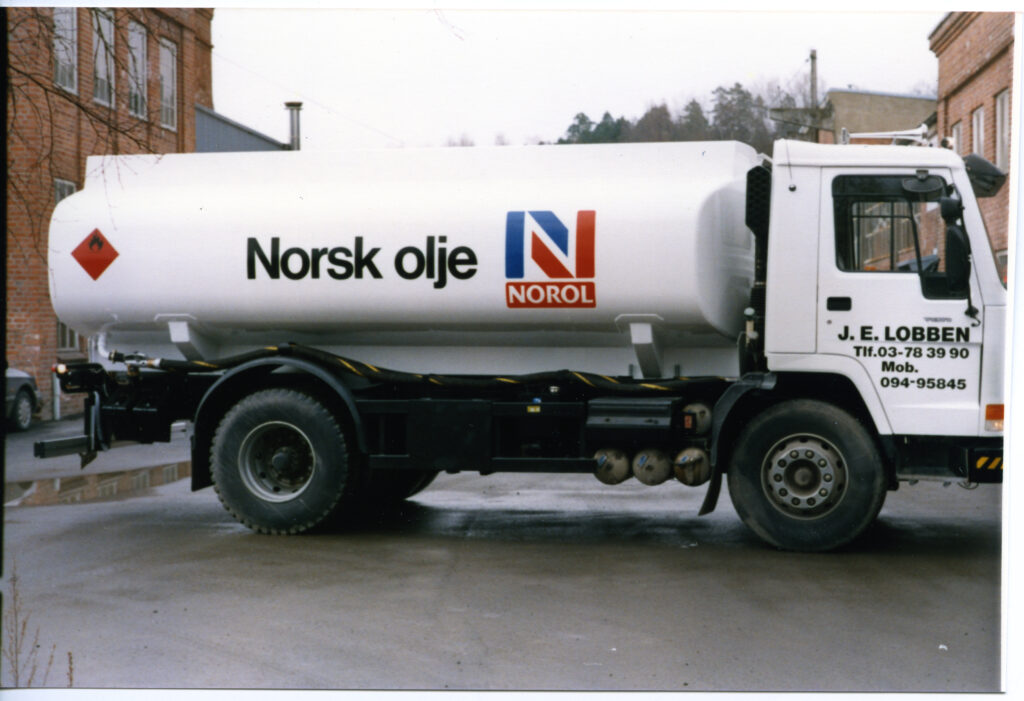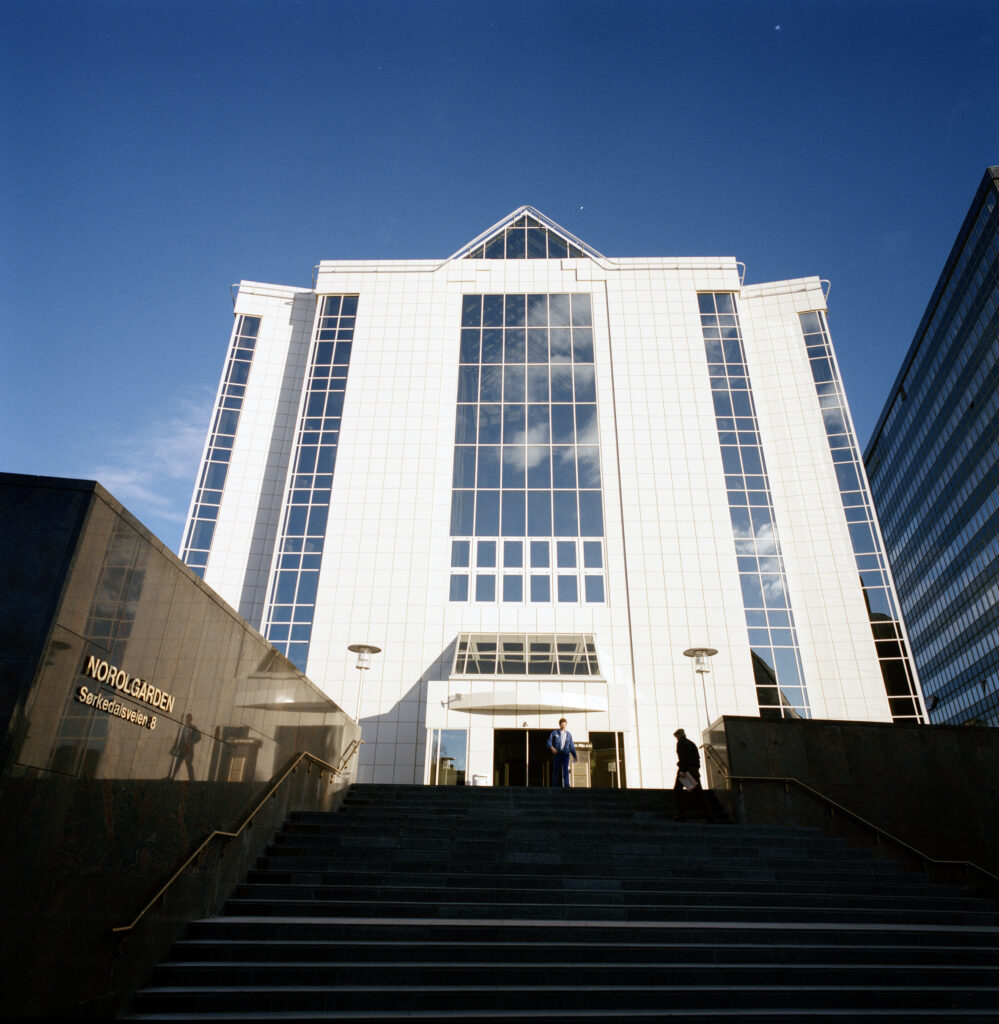From Norol to Statoil

Statoil owned 15 per cent of the shares in Norsk Olje a.s (Norol) when that company was established, and acquired full ownership from 1 January 1988. Although still organised as a subsidiary with its own board and brand, Norol was nevertheless Statoil’s exclusive distribution company. Its logo was later changed to Statoil’s. The ownership structure was altered gradually and through three different Storting decisions in the spring of 1978, the autumn of 1979 and December 1987 respectively. Primary drivers of the willingness to make changes to Norol were poor financial performance and a sub-optimal organisation.
Too many cooks in a boiling broth

Centre Party leader and former prime minister Per Borten commented in 1971 that running a minority government was a bit like carrying a bunch of poles – they flopped about in every direction.[REMOVE]Fotnote: https://www.youtube.com/watch?v=V00yW1sY9ws, accessed 11 May 2022. Managing a company like Norol, which was owned by several different companies in addition to the state, had some features in common with that metaphor. CEO Jan T Bjerke said board meetings in the early years were “very interesting, with views tossed in from various groupings”.[REMOVE]Fotnote: Bjerke, Jan T, 1990, ”20 år som oljenasjon”, 70 år: 1920-1990, Oslo: 13. Arve Johnsen, Statoil’s first CEO, was less diplomatic and called the 14-strong board “cumbersome and irresolute”.[REMOVE]Fotnote: Johnsen, Arve, 1990, Gjennombrudd og vekst: Statoil-år 1978 til 1987, Gyldendal Norsk Forlag, Oslo: 60. It was perhaps a case of too many cooks trying to run the company simultaneously, and not always in agreement. Nor was that confined to the boardroom. Among the new company’s challenges were that it was overstaffed and had too many unprofitable service stations, particularly in sparsely populated areas.[REMOVE]Fotnote: Proposition (Bill) no 142 (1977-78) to the Storting, Om styrking av driftsgrunnlaget for Norsk Olje a.s: 3, https://stortinget.no/no/Saker-og-publikasjoner/Stortingsforhandlinger/Lesevisning/?p=1977-78&paid=2&wid=b&psid=DIVL776.
These problems were partly overcome during the late 1970s, with the workforce downsized from 1 080 people to about 800 by 1979. That was achieved, without redundancies, through natural wastage or by offering alternative jobs in one of the owner companies.[REMOVE]Fotnote: Anon, 1990, ”Perioden 1976-1979”, 70 år: 1920-1990, Oslo: 35. The number of forecourts was also cut, particularly in places where the merged company ended up with two service stations close to each other.[REMOVE]Fotnote: Proposition no 142, op.cit: 10; Proposition no 1 (1979-80), supplement 2: 5. Others were closed because the basis for continued operation no longer existed.[REMOVE]Fotnote: Anon, 1990, ”Perioden 1980-1984”, 70 år: 1920-1990, Oslo: 48.
But while Norol was rationalising at home, it faced challenges abroad.
The oil market is international, with many factors outside national control. Norol had big foreign debts and, since its earnings were largely domestic and in Norwegian kroner, it was very sensitive to exchange rate fluctuations.[REMOVE]Fotnote: Proposition no 142, op.cit: 11. That sensitivity was particularly associated with its shareholding in Rafinor, which owned the Mongstad refinery.

Much less of the latter’s debt had been paid down than at competing facilities, and it had been established when western Europe’s refining sector was suffering from excess capacity. Nor did it help that restoring oil consumption after a slump in the early 1970s took time.[REMOVE]Fotnote: Ibid: 6-7; Bjerke, Jan T, op.cit: 7. The Ministry of Petroleum and Energy argued that this debt would be much easier for Statoil to bear since it traded on a large scale in foreign currencies and had better liquidity for raising long-term loans.[REMOVE]Fotnote: Proposition no 142, op.cit: 16-17. One solution for Norol’s problems could therefore be that Statoil took over Rafinor.
Mongstad to Statoil
By the spring of 1978, it was clear that the predictions made by the non-socialist parties during the debate on creating Norol in 1976 had been right.[REMOVE]Fotnote: Recommendation no 349 (1977-78) to the Storting from the industry committee, Om styrking av driftsgrunnlaget for Norsk Olje A/S (Norol): 7-10, https://stortinget.no/no/Saker-og-publikasjoner/Stortingsforhandlinger/Lesevisning/?p=1977-78&paid=6&wid=aI&psid=DIVL2401; Proceedings of the Storting, 5 June 1978: 3503, https://stortinget.no/no/Saker-og-publikasjoner/Stortingsforhandlinger/Lesevisning/?p=1977-78&paid=7&wid=a&psid=DIVL382&pgid=c_0805&vt=c&did=DIVL92. After running at a loss every year since its inception, the company needed to increase its equity. The minority shareholders – Norsk Hydro, Saga Petroleum and the Norwegian Cooperative Union and Wholesale Society (NKL) – had made it clear that they were not willing to commit more capital.[REMOVE]Fotnote: Proposition no 142, op.cit: 13.
The proposal from Labour petroleum and industry minister Bjartmar Gjerde, in other words, was that the Norol shareholding in Rafinor should be transferred to Statoil.[REMOVE]Fotnote: Ibid: 18-19. In the ministry’s view, this was the best way of securing Norol’s future financial position. Removing its largest source of debt and biggest foreign exchange risk would strengthen the company. This would also allow it to concentrate more strongly on its core business – marketing and sale of petroleum products.[REMOVE]Fotnote: Ibid: 16-17.
For their part, the Conservative, Christian Democrat, Centre and Liberal parties maintained that allowing Norol to sell its share of Rafinor would weaken its future development opportunities and make it a less independent distribution company, which was in reality subordinated to Statoil. They also wanted a debate on the issues of principle involved in the future organisation of state-owned refining and oil distribution – something these parties had also called for when Norol was founded.[REMOVE]Fotnote: Proposition no 349, op.cit: 10.
The non-socialists won the day in the Storting (parliament), where Labour’s proposal was voted down.[REMOVE]Fotnote: Proceedings of the Storting, 5 June 1978, op.cit: 3521.
Seeing which way the wind was blowing in the debate, Labour’s Arvid Johanson presented a subsidiary motion which called for Norol to received NOK 300 million in subordinated loan capital. That received majority support and secured the company’s continued operation.

At least as important was the formulation devised by Johanson in cooperation with Johnsen and Gjerde: “The government is requested to present the question of the final form of organisation for Norsk Olje a.s to the Storting. The aim is that this company strengthens its position as a marketing body in a closer alignment with [Statoil]”.[REMOVE]Fotnote: Ibid: 3515; Johnsen, Arve, op.cit: 63-64. This wording formed part of the motion and, by approving that, the Storting laid the basis for a closer collaboration between the two companies.[REMOVE]Fotnote: Ibid: 3521.
From 15 to over 70 per cent
Although Norol showed an extraordinary profit in 1979, the Ministry of Petroleum and Energy maintained that its equity was still far too low for such a large company.[REMOVE]Fotnote: Proposition no 1 (1979-80), op.cit: 6. As a result, it wanted to increase Norol’s share capital by NOK 200 million and also amend the ownership structure. That was because the smaller shareholders – excluding Statoil and the state – had again indicated that they were not interested in providing more capital. On the contrary, they wanted to sell out.[REMOVE]Fotnote: Johnsen, Arve, op.cit: 94. That would make the company simpler to run and more efficient, as well as permitting reductions to the board and corporate assembly.[REMOVE]Fotnote: Bjerke, Jan T, op.cit: 13; Proposition no 1 (1981-70): 10-11. The ministry wanted Statoil to buy the new Norol shares.[REMOVE]Fotnote: Proposition no 1 (1981-70): 3.
Put briefly, the ministry sought to take advantage of the formulation used in the 1978 decision which opened for a closer alignment between the two companies. The idea was to make Norol a Statoil subsidiary while retaining its own board and responsibility for results.[REMOVE]Fotnote: Ibid: 3 and 8. Labour believed that closer collaboration would be a competitive advantage for Norol in relation to the Esso and Shell marketing operations, which were backed by big oil companies.[REMOVE]Fotnote: Proceedings of the Storting, 27 November 1979: 1132, https://stortinget.no/no/Saker-og-publikasjoner/Stortingsforhandlinger/Lesevisning/?p=1979-80&paid=7&wid=a&psid=DIVL575&pgid=a_1249&vt=a&did=DIVL723.
The non-socialists repeated their 1978 arguments that the new ownership structure would breach the independence Norol was intended to acquire in 1976. Unlike 1978, however, they regarded the prospects for the company as bright. With the existing shareholders and the good forecasts, it might be able in a little while to attract private investors. Norol would then correspond to a greater extent with the vision which the non-socialists had of the company when it was founded in 1976.[REMOVE]Fotnote: Recommendation no 8 (1979-80) to the Storting from the industry committee, Om bevilgninger på statsbudsjettet for 1980 vedkommende Industridepartementet og Olje- og energidepartementet: 23. https://stortinget.no/no/Saker-og-publikasjoner/Stortingsforhandlinger/Lesevisning/?p=1979-80&paid=6&wid=aII&psid=DIVL50 The Conservatives in particular saw this as a good opportunity.[REMOVE]Fotnote: Proceedings of the Storting, 27 November 1979, op.cit: 1129. But Labour thought it would be difficult. Given that all the small shareholders were now pulling out, the party considered it almost impossible that private investors would show an interest in Norol.[REMOVE]Fotnote: Ibid: 1132.

Labour lacked a clear majority in the Storting, and depended on support from at least one other party. Rather surprisingly, this was forthcoming from the Socialist Left. When Norol was created in 1976, the latter had demanded as the price of its backing that the company should be independent of Statoil. Only three years later, several aspects of the restructuring now appealed to the party. It approved of Norol now becoming wholly state-owned and of the government exerting good control of the company through Statoil’s general meeting. Nevertheless, perhaps the most important argument was that employees in both Norol and Statoil were in favour.[REMOVE]Fotnote: Ibid: 1176-1176.
The Storting voted by the narrowest possible margin in favour of the government appropriating about NOK 85 million to buy out the small shareholders in Norol. It also agreed to expand Statoil’s share capital by NOK 210 million, which would be applied to buying Norol shares.[REMOVE]Fotnote: Ibid: 1182-1183. The latter thereby became a subsidiary of Statoil, which had gone from owning 15 per cent of the company to holding more than 70 per cent of its equity.
Sole owner
As early as 1975-76, when the Ministry of Industry[REMOVE]Fotnote: This was before the Ministry of Petroleum and Energy was established. was working to create a Norwegian state-owned oil distribution enterprise, it had been clear that the Labour government would have preferred Statoil becoming an integrated oil company – pursuing the whole range of petroleum industry activities from seismic surveying to marketing. Support for that was lacking in the Storting – then. This was perhaps an idea which needed to mature over time.
In 1987, the Labour government presented a proposal via the Ministry of Petroleum and Energy that the state should sell its remaining Norol shares to Statoil for NOK 400 million. Reasons for this plan included that ownership of the distribution arm in Norway would then correspond with the position in Denmark and Sweden, where Statoil had acquired Esso’s distribution networks and operated them through wholly owned subsidiaries. Improved efficiency and orderly working conditions were highlighted as another benefit. Third, the government argued that the state could continue to control Norol via Statoil’s general meeting. The ministry called for the matter to be resolved by the end of 1987 for the quoted price to remain valid. It also required Norol to remain an independent subsidiary.[REMOVE]Fotnote: Proposition 24 (1987-88) to the Storting, Salg av statens aksjer i Norsk Olje a.s: 2. https://stortinget.no/no/Saker-og-publikasjoner/Stortingsforhandlinger/Lesevisning/?p=1987-88&paid=2&wid=a&psid=DIVL730.
When the proposal was debated by the Storting on 16 December 1987, only the Conservative and Progress parties took a negative view. The former wanted to wait, and the latter maintained that the Norol shares should be offered to private investors instead. When that motion failed to be carried, it voted for the government proposal. The motive was to provide the Treasury with the NOK 400 million Statoil intended to borrow to finance the Norol share purchase. That secured a Storting majority for the plan. The rapporteur on this issue for the standing committee on energy and industry, Labour’s Inger Lise Gjørv, noted that there was nothing automatic about Statoil becoming sole owner of Norol. Where the committee majority – comprising Labour, the Centre Party and the Christian Democrats – was concerned, no drama was attached to the decision.[REMOVE]Fotnote: Proceedings of the Storting, 16 December 1987: 1802-1804 and 1797, https://stortinget.no/no/Saker-og-publikasjoner/Stortingsforhandlinger/Lesevisning/?p=1987-88&paid=7&wid=a&psid=DIVL14&pgid=b_0335&vt=b&did=DIVL78. Perhaps one could say that this was, eventually, part of an expected outcome.
Change of name
During the Storting debate in 1987, Gjørv stated that the Norol logo might eventually be replaced by the Statoil brand – a development which “will probably come of its own volition”. The company’s livery would then be same as on Statoil service stations in Denmark and Sweden. At the same time, she emphasised that a brand change was not urgent. Conservative Inger Koppernæs, on the other hand, was not particularly enthusiastic about such a change of name and, if it were to happen, believed it was up to the company’s board.[REMOVE]Fotnote: Ibid: 1798-1799.
Both were proved right. In the autumn of 1989, the Norol board voted to change the company’s name to Statoil Norge a.s. It would remain an independent subsidiary rather than an integral part of Statoil, but the Norol livery would be replaced with the parent company’s. The change occurred during the spring of 1991.[REMOVE]Fotnote: Anon, 1990, ”Perioden 1980-1984”, op.cit: 56-57. It was only then that Statoil’s takeover of Norol acquired visual expression – even though the acquisition had been gradually under way over a number of years.


